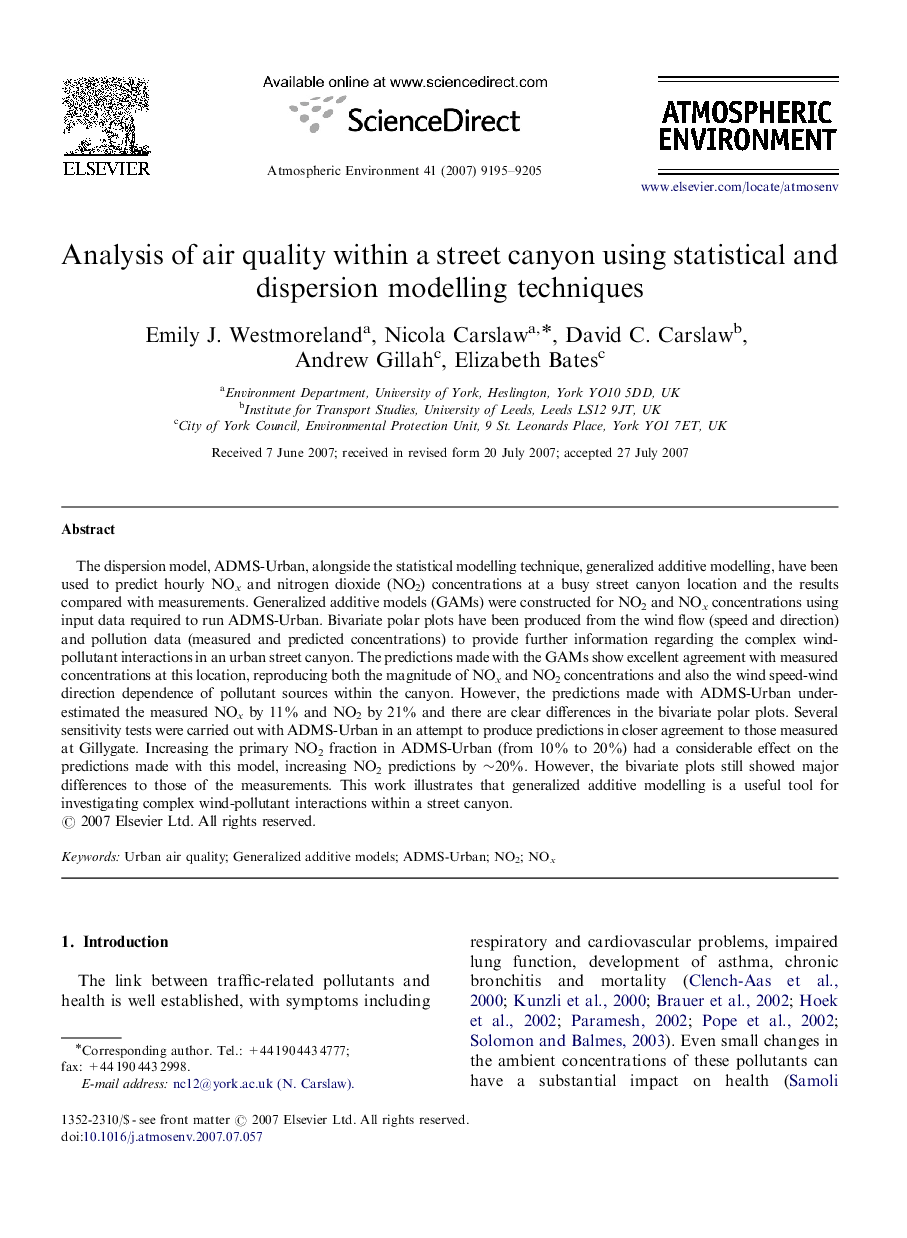| Article ID | Journal | Published Year | Pages | File Type |
|---|---|---|---|---|
| 4443160 | Atmospheric Environment | 2007 | 11 Pages |
The dispersion model, ADMS-Urban, alongside the statistical modelling technique, generalized additive modelling, have been used to predict hourly NOx and nitrogen dioxide (NO2) concentrations at a busy street canyon location and the results compared with measurements. Generalized additive models (GAMs) were constructed for NO2 and NOx concentrations using input data required to run ADMS-Urban. Bivariate polar plots have been produced from the wind flow (speed and direction) and pollution data (measured and predicted concentrations) to provide further information regarding the complex wind-pollutant interactions in an urban street canyon. The predictions made with the GAMs show excellent agreement with measured concentrations at this location, reproducing both the magnitude of NOx and NO2 concentrations and also the wind speed-wind direction dependence of pollutant sources within the canyon. However, the predictions made with ADMS-Urban under-estimated the measured NOx by 11% and NO2 by 21% and there are clear differences in the bivariate polar plots. Several sensitivity tests were carried out with ADMS-Urban in an attempt to produce predictions in closer agreement to those measured at Gillygate. Increasing the primary NO2 fraction in ADMS-Urban (from 10% to 20%) had a considerable effect on the predictions made with this model, increasing NO2 predictions by ∼20%. However, the bivariate plots still showed major differences to those of the measurements. This work illustrates that generalized additive modelling is a useful tool for investigating complex wind-pollutant interactions within a street canyon.
